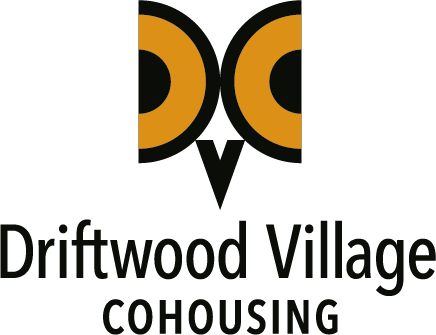How we work together
What is cohousing?
From the Canadian Cohousing Network:
“Cohousing provides personal privacy combined with the benefits of living in a community where people know and interact with their neighbours. It’s about living in a way that’s responsive to a world that has changed dramatically in the last fifty years... Cohousing offers hope in our often dissociated society. Through cohousing, we can build a better place to live, a place where we know our neighbours, a place where we can enjoy a rich sense of community and contribute to a more sustainable world.”
From the Cohousing Association of the United States:
“Cohousing is community designed to foster connection. Physical spaces allow neighbors to easily interact with others just outside private homes. Common areas including kitchen, dining space and gardens bring people together. Collaborative decision-making builds relationships.
Prefer to learn from a book? Our local public libraries can help you out:
Creating Cohousing: Building Sustainable Communities, by Kathryn McCamant and Charles Durrett (North Vancouver City Library) (Vancouver Public Library)
The Cohousing Handbook: Building a Place for Community, by Chris ScottHanson and Kelly ScottHanson (North Vancouver City Library) (Vancouver Public Library)
The Senior Cohousing Handbook: A Community Approach to Independent Living, by Charles Durrett (North Vancouver City Library) (Vancouver Public Library)
Community building
Our community values working cooperatively. Since 2015, we have worked together to create this community, both in terms of the building under construction, and the social connections amongst neighbours.
“One of the things we most miss out on by not having deep community is the abundance of support, resources, and care that exists when you’ve got many hearts and hands surrounding you. We can create more of what we all need when we are in community.”
Participation
How do different people participate at Driftwood Village Cohousing?
Our community succeeds and thrives based on member participation. Each person finds their own niche, based on their skills, passions and capacity to contribute. In addition, we recognize that flexibility is important (e.g. new baby, family illness, disability).
Typical areas in which people choose to participate are governance (e.g. committees, facilitation, record keeping, bookkeeping), physical work (e.g. gardening, maintenance) and community building (e.g. social events, conflict resolution).
Our community also has a system of common meals. Meals are provided 3 times per week and are optional to attend (if it works for your schedule and sounds tasty!). In each 5 week cycle, everyone signs up for 2 cooking and/or cleaning shifts, according to their skills and interests. Each meal is cooked by a team of 3 people, gratefully enjoyed by a group of neighbours, and then cleaned up by a team of 3 people.
“I’m looking forward to swapping skills! I can do some things but not others, and we all have this mix. Together we will have so much more.”
Consensus decision-making
Driftwood Village uses consensus decision-making, which is a cooperative process in which the community works together to understand an issue and develop a suitable proposal, and agrees to support a decision that is in the best interest of the whole group (as opposed to a decision that is in the best interest of certain individuals). In cohousing jargon, it usually works out as “most people get most of what they want, most of the time”.
“The promise of cooperative culture is that decisions will be made collectively — rather than by the strong, the quick, the rich, the loud, the privileged, or the clever.
Doing that well means creating and sustaining openings for the input of all interested parties to be heard and taken into account.”
managing Conflict
While we aim to be respectful of our neighbours and understanding of different perspectives, we know that interpersonal conflict is inevitable with 27 households and 20 children living on one-third of an acre. As such, we have skills and strategies to give and receive feedback and to constructively address conflicts. Over the years, we expect to go through some awkward conversations, but that’s preferable to letting a disagreement with a neighbour fester.
“The reality is that all of us do things that bug other people, and it is easy to have that slide from irritation to conflict. Different tools approach conflict resolution in different ways, and are offered so you have the right tool for the situation. ”
